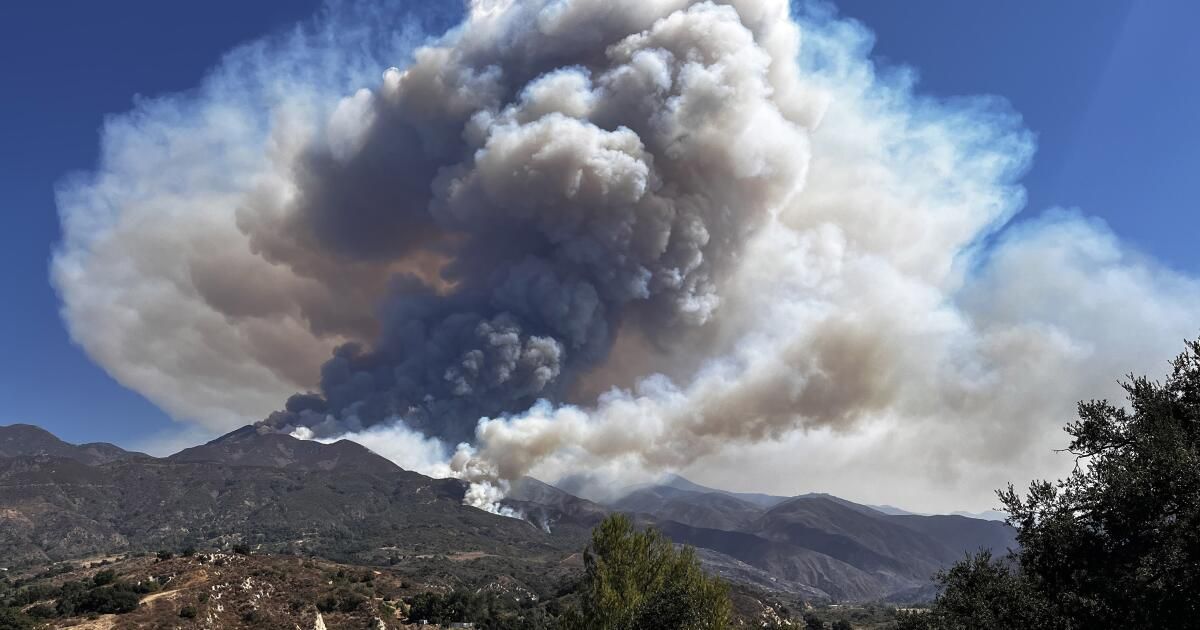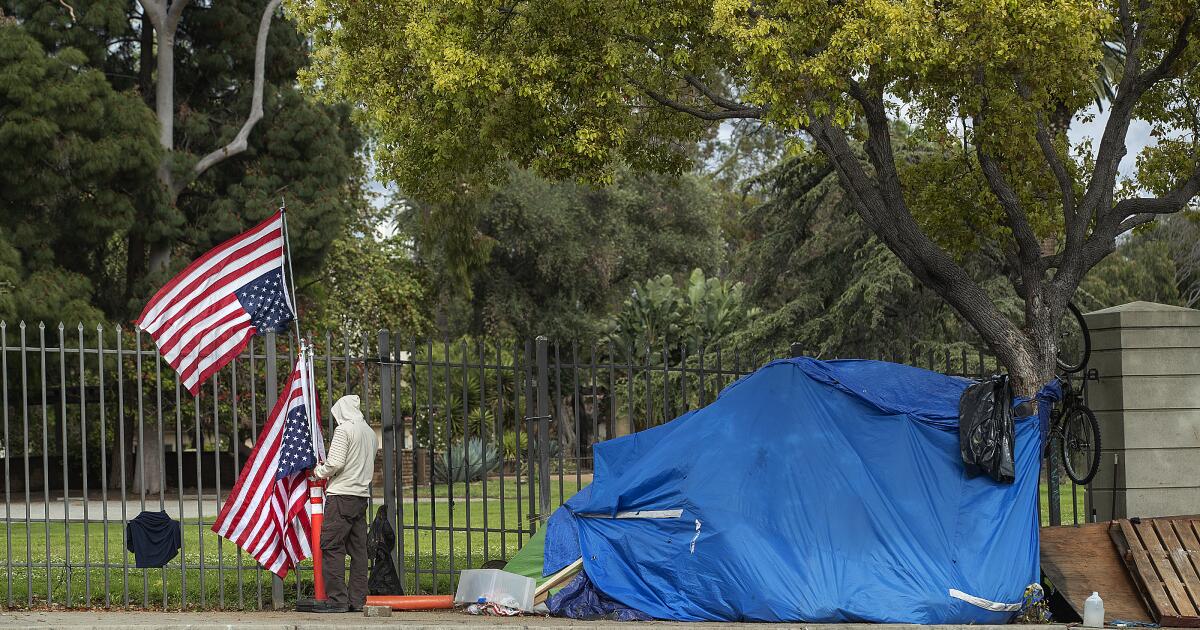Press reports measure wildfires in terms of acres burned and structures destroyed. But while members of my Facebook hiking group fervently hope that no more homes are lost, they also measure the Airport Fire in the Santa Ana Mountains by the blackened vistas, oak forests reduced to skeletons, wildlife killed or pushed to the margins of their habitat, and spectacular and much-loved trails we won’t be able to hike for years.
Official information is hard to come by as the fire rages, so we rely on updated reports from a resident of the area near the fire who has climbed and hiked virtually every foot of the Cleveland National Forest north of Ortega Highway, and on the skills of the people who manage to overlay trail maps on official fire maps.
We know that Falls Canyon, a short, easy but remote little spot leading to a 40-foot waterfall, burned badly, along with the watershed above it, which has more waterfalls but is much less accessible to the public. But what about the San Juan Trail, with the stunning views of green mountainsides, flowers that are hard to find anywhere else, and oak trees providing shade? Or the upper part of Trabuco Canyon, site of old mines and Humboldt lilies, which burned in the 2018 Holy Fire?
How will an area that has been burned twice in so few years recover? The local nature was not meant to burn so often. And what will happen to the local pumas when they lose much of their safe and privileged territory?
The biggest question of all: Why on earth did Orange County Department of Public Works workers think it was a good idea to use heavy equipment to move large boulders in a dry brush patch during an “excessive heat warning,” which means, among other things, an increased risk of wildfire? Steel hitting rock is a recipe for sparks, even on a normal sunny day. Wouldn’t it have at least been a good idea to have some firefighting equipment on hand?
The work could have waited. The county was responding to complaints from area residents about loud off-road vehicles driving into the brush leading away from the dirt road; the rocks were meant to create a barrier.
The county is reportedly investigating, but given the damage and liability involved, this calls for a state investigation, and if the county is found to have erred, state fire officials should issue common-sense protocols to restrict work that can cause this type of conflagration. Without an objective outside examination, it's hard to trust that we'll ever get a clear answer as to who's responsible.
Meanwhile, answers about the damage are coming in slowly. On Thursday, there were reports that the fire had spread far enough to leave the Upper Hot Springs canyon, with its beautiful terraced waterfall, intact. But then came the news that it had burned down. So had the campground that served as the trailhead.
All of this comes at a curious time for me. I'm the author of a hiking book whose first two editions have sold out, and the publisher has been talking about a third edition. But right now, it seems that at least seven, maybe eight or nine, of my “50 Hikes in Orange County” have disappeared, or at least changed forever. California's wild areas are coming back after a fire, but now that I'm a white-haired outdoorsman, will they come back again during my hiking life? It's impossible to accurately describe a trail that could well be transformed in the years to come; perhaps the time to describe these beautiful areas is over for now.
Orange County has more than 3 million residents, and if you look at it on a map, it's hard to imagine how they can fit into such a small piece of land. There are regional wilderness parks, but by and large, the only way to escape civilization has been to head into the national forest, where the Santa Ana Mountains and tall chaparral provide a visual shield from residential areas and mini-malls.
Climate change has already been at work in many of California's wilderness areas; this time, it appears that a county work crew that is supposed to serve the public, not endanger it, has teamed up with a warming planet to deprive a metropolitan area of its best access to nature.












